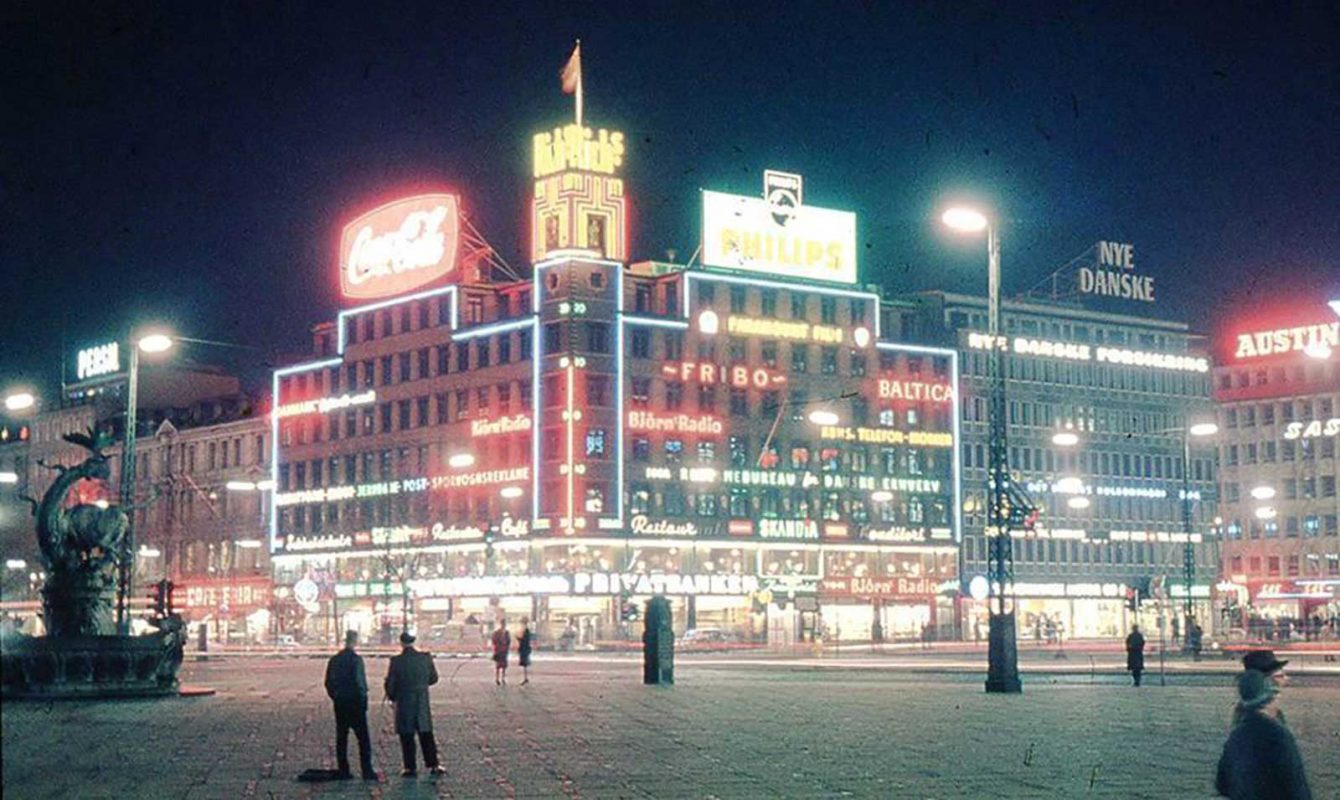History
The Copenhagen City Hall and the associated square were established in the period 1892-1905 and were designed by Martin Nyrup. The current building is to account for Copenhagen’s 6th City Hall and the square is built where the former Halmtorv was. The original square, with an oval layout in front of the town hall, is clearly marked by inspiration from Italian town squares and especially the town hall and its square in the Tuscan city of Siena had distinctive similarities to Martin Nyrup’s town hall.
On the corner plot Town Hall Square and Vesterbrogade lay the Central Hotel, a four-storey building designed by Vilhelm Klein. On the ground floor of the hotel was the city’s famous restaurant Cafe Umbrella, which was named after the huge umbrella set on the corner for outdoor dining.
In 1901, the precursor to the napkins was set up at the hotel entrance. It was a wooden pillar with a single handkerchief by Anders Bundgaard. The pillar itself was designed by Martin Nyrup, who originally imagined two pillars, one on each side of the driveway to the Town Hall Square, when arriving at Vesterbrogade. It was not until 1911 that the final statue, as we know it today, was erected – but then it was placed somewhere else in the square. Both the hotel and the restaurant disappeared with the building when it was replaced by the current property.
The current building was built in the years 1934 – 1936 and was designed by Alf Cock-Clausen. The house is one of the few Art-Deco buildings in Copenhagen and is especially known for its decoration, designed by Einar Utzon-Franck in 1936. The two gilded weather girls at the top of the corner tower and the associated thermometer in neon tubes are one of the few neon commercials from the 30s, which can still be experienced in Copenhagen. In fact, the decoration is intended as a weather station, as it was originally planned for the girls to drive back and forth after today’s barometer level. When the weather was good, the “sunshine girl” drove by bike and summer dress – and when the weather was bad, the “rain girl” drove forward, with dog, umbrella and raincoat.
VEJR PIGERNE / WEATHER GIRLS
Despite the PARAPLYEN’s unique Art-Deco architecture, it is probably the decoration with the weather girls and the associated thermometer that the building is best known for today. It was designed by Einar Utzon-Franck who lived in the period 1888-1955. Einar Utzon-Franck initially began as a painter, but later changed direction and was admitted to the Academy of Fine Arts’ sculpture school. Here, in 1918, when he was only 30, he was appointed professor at the Academy of Fine Arts in Copenhagen. In the capital you can experience other statues of Einar Utzon-Franck, among others. at Sankt Annæ Plads, where the famous equestrian statue of Christian X stands.




